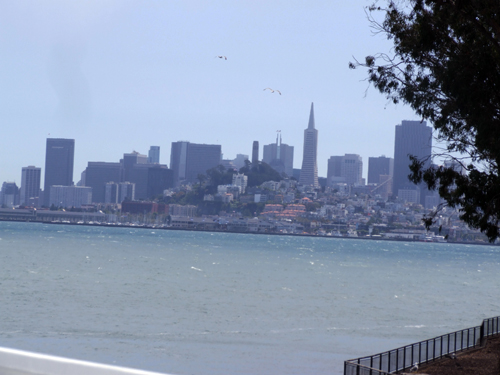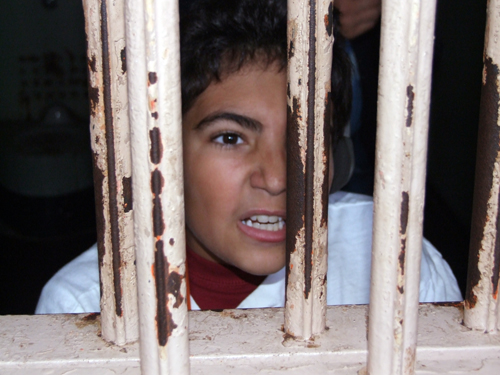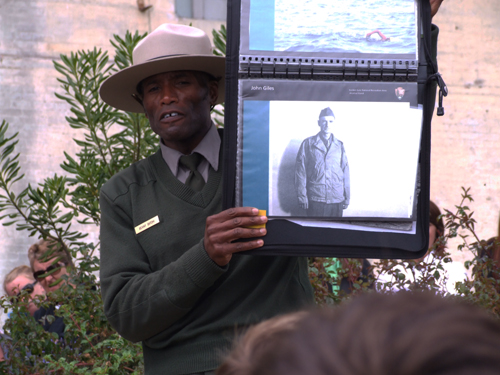By Donald H. Harrison
ALCATRAZ ISLAND, California – From the prisoners’ viewpoint, what was the worst thing about the federal prison here on “the rock” in the middle of San Francisco Bay?
Was it the strict routines they had to follow? The loneliness? The chance that they may fall afoul of the rules and have their library or recreational privileges taken away? Did they hate the idea that they could be thrown into solitary confinement any time that their transgressions were adjudged to be of the more serious types?
All these things bothered the prisoners. But what bothered them even more, according to an audio tour offered by the National Parks Service, was their glorious view of San Francisco’s skyline. Across the water, there was freedom! People following their normal lives. Women.

Some evenings, when the lights of San Francisco would be reflected in the bay, it was even worse for the prisoners. Especially on New Year’s Eve, it seemed, the wind would carry the sounds of people laughing, maybe even of glasses clinking in a merry toast. That’s when the prisoners felt most miserable of all.
The prisoners dreamed of escape. Some made their way off Alcatraz vicariously, by taking up drawing or painting and letting their imaginations carry them to far-off places. Others, however, actively planned their escape from the cellblock that was surrounded by guards, who themselves were surrounded by the cold choppy waters of San Francisco Bay.
One of the most famous escape attempts resulted in the “Battle of Alcatraz” in May of 1946. Prisoner Bernie Coy fashioned an expandable device from steel parts that he could place between two cell bars and by turning a knob spread the bars wide enough for him, naked and greased, to squeeze through. He jumped a guard in the gun gallery, took his rifle, pistol and keys, and passed them down to accomplices on the cellhouse’s main floor . Other prisoners then were let out of their cells.
The plan went awry when none of the keys would open the door to the outside recreational area from which Coy had figured he would stage the next leg of his try for freedom. When overpowered guards did not answer ringing phones, other guards came looking for them. In turn, they were disarmed and herded into two cells. But the prisoners had nowhere to go; they were trapped in the cellhouse. In frustration, Joseph Cretzer stuck his gun through the bars of the cell where the officers were being held and started firing, wounding them.
Now sirens went off, and the warden arranged for the U.S. Marines to help him take back his prison. They dropped grenades through the roof of one part of the prison, and bombarded other parts of the cell block. Eventually, the would-be escapees were overwhelmed, while other prisoners remained in their cells, lying under their mattresses to protect themselves from shrapnel. Prisoners Coy, Kretzer and Marvin Hubbard and officers William Miller and Harold Stites lay dead, and convicts Miran Thompson and Sam Shockley subsequently were executed for their roles in the bloody escape attempt.
Some of the most notorious prisoners at Alcatraz such as mob boss Al Capone, the Jewish mob lieutenant Mickey Cohen, and Alvin “Creepy” Karpis , played no role in these escape attempts. On the outside, these celebrity underworld figures were tough and mean, but on the inside of the prison, they were content to rest on their laurels. Likewise, Robert Stroud, the killer remembered by the movies as the “Birdman of Alcatraz” did not participate in this or other celebrated escape attempts.
There can be long lines to catch the Hornblower Cruises-operated ferry from San Francisco that takes visitors out to Alcatraz Island, a little more than a mile away. Often visitors need reservations to book tours days in advance. The visitors expend so much effort getting to the island, it’s somewhat surprising that such emphasis is placed both in live tours by rangers and in the audio tour of the cellblock on the prisoners’ efforts to get off Alcatraz.

Alcatraz served as a military prison from 1859 to 1933, and was converted to a federal penitentiary in 1934. It remained a prison until 1963, when then Attorney General Robert F. Kennedy, citing cost factors, ordered it closed and its prisoners removed to other federal penitentiaries. Although Alcatraz could hold 336 prisoners at any given time, official brochures report the population was never more than 260 prisoners.
The “rock” had 1,545 inmates over its 29-year history, most of whom like Capone, Cohen, Karpis and Stroud stayed put. But there were over the years 13 escape attempts in addition to the Battle of Alcatraz. Most were immediately foiled, but a few are shrouded in a fog as thick as that which sometimes rolls into San Francisco.
On arrival at the dock of Alcatraz, we learned from Ranger Benny Batom about the clever but unsuccessful plan of John Giles who during eight years of working on the same dock stole different parts of an Army uniform until he had assembled enough to pose as a sergeant. He wore his assembled uniform under his prison garb, slipped off the outer coveralls and stepped on July 31, 1945 aboard an Army vessel bound, he thought, for freedom. However, instead of heading for San Francisco, the vessel went to nearby Angel Island, which was once an immigration center. It was realized that there was one more soldier aboard than the vessel’s complement, and Giles was arrested.

In the early morning hours of June 11, 1963, Frank Morris and brothers Clarence and John Anglin hoisted themselves up a ventilation shaft from their cells and made their way to a roof, from which they descended to San Francisco Bay along a stovepipe. With flotation devices made from raincoats, they disappeared into the Bay, never to be heard from again. Did they make it or did they drown? No one knows for certain.
To avoid being detected as away from their cells during regular bed check, Morris and the Anglin brothers had fashioned dummy heads which they placed in their beds at such an angle that they appeared normal to the passing guards.
Re-creations of the heads are now in those prisoners’ beds, the originals being preserved in the archives for the sake of history…. and for the sake of criminal evidence, just in case anyone should be able to prove that the trio actually did make it illegally to safety.
*
Harrison is editor of San Diego Jewish World. He may be contacted at donald.harrison@sdjewishworld.com File: US Canada West 07